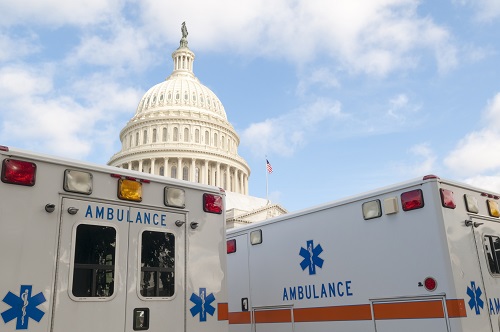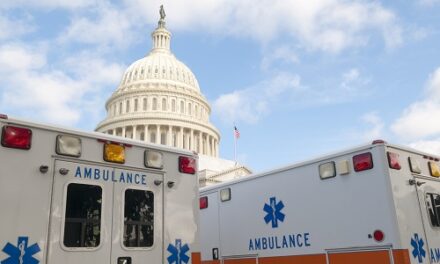If Theresa Schiavo had lacked health coverage fifteen years ago, would we ever have heard of her plight? With a view to the right wing’s anguished insistence on the tax-payer financed life support of one person against her will, I have translated an op-ed from the Norwegian Aftenposten. The author, Torgrim Eggen, is a novelist spending a lot of time in the USA, whose health care system he here explains to his countrymen. While the bare facts may be familiar to many, hopefully some will find his outsider’s view refreshing.
Cross-posted from dKos.
Land of the healthy
By Torgrim Eggen
Aftenposten, 26.03.05
[From the Norwegian by Sirocco]
My last visit to the doctor in Norway cost me about 150 kroner, and I recall joking to my physician: “That’s a bargain compared to what I spend on ruining my health.”
A $1,235 bill is not as easily shrugged off. By yesterday’s course it amounts to 7,570 kroner. This does not cover any stay at a hospital, ambulance ride, or medication – no, it is owed for a brief examination, a routine check really, including ultrasound and a series of required tests. (I was not the object of examination.) For this, the private American health care system charges what is to many a net monthly wage.
It remains to be seen if the bill will be covered by a standard Norwegian travel insurance. Possibly it will, yet the thought occurs to me: What about the uninsured? How in the world would they manage this?
“Don’t call for an ambulance”
My girlfriend tells a story from her job at a Manhattan book store. A female co-worker fell ill at work and fainted. As colleagues rushed to her aid, the first thing she said upon regaining consciousness was: “Please, do not call for an ambulance! I’ll take a cab!” Then she fainted again, and meanwhile someone had called for an ambulance anyway. As she had no health insurance, she was stuck with a $500 ambulance bill on top of the doctor’s bill. A cab would have cost $20.
If you collapse on the street in an American city, the first question you will hear is not, “Are you OK?” or, “How are you doing?” Rather it will be, “Do you have a health insurance?” If you cannot answer affirmatively, you are unlikely to be brought to the nearest hospital. In case your condition hinders you from replying, you are well advised to carry documentation. I have been counseled always to carry an insurance policy in my pocket. That is easy to forget when you come from a welfare state.
45 million Americans, or 15,6 percent of the population, lack any form of health insurance. The number dates back to 2003 and has presumably grown since then. This means that 45 million Americans cannot in principle afford to fall ill. Perhaps unsurprisingly, they are also the segment of American society with poorest health.
Not a matter of pennies
A significant proportion of these are unemployed or have jobs where the employer does not pay for health insurance. Thus we are talking about the low-paid, people looking for work, and many of the self-employed. 60,4 percent of Americans get most of their health insurance covered at work; however, the remaining share of the bill has increased by over 50 percent in the last five years. For a policy covering the employee’s family, he or she would in 2003 be charged an average of $2,414 (about 14,800 kroner). This does not include the ‘user fee’ demanded for treatment or hospitalization. The proportion of Americans with health benefits decreases every year, in part because fewer employers offer it, in part because employees cannot afford it.
And what if your job offers nought? As there are online services for these things, I tried to calculate the cost of a private insurance for myself and a hypothetical family of four, ticking the box for ‘smoker’ just for fun. (Other health-related questions did not come up in the primitive service.) The price was $837,78 a month or roughly 61,000 kroner a year! It does not cover consultations with a physician, nor routine health checks, X-rays, or indeed any tests not conducted by a hospital. If we stay fairly healthy, the insurance is worthless. And evidently, it is not a matter of pennies.
The young and non-established at risk
Thus young and non-established are especially at risk. A family insurance expires at the children’s 18th birthday. Most 18-year olds have other things on their minds than illness – and fortunately, most aren’t ill. For serious illness without insurance may lead to ruin. Consequently, young people often eschew getting diagnosed before the disease has gone too far, causing thousands of deaths every year.
The USA has a program called Medicaid that finances health services for the poorest. The problem is that due to the stringent requirements, most working people do not qualify. And if you are supported by Medicaid, you cannot freely choose your hospital or physician. Nor can you expect to get priority when you need important surgery.
50 million Americans, among them many disabled, are supported by Medicaid, which has a $300 billion annual budget. At the moment the President is arguing with the Senate over the budget, as Medicaid is a money drain in a society with a tight economy and a galloping rise in medical expenses – precisely why Medicaid has grown by 50 percent during the last five years. It is a vicious circle.
How healthy do you get by being unable to afford ill health? Not very, according to statistics. Although people in the USA spend much more on health than Europeans do, the public health is inferior. Where one sees a tempting skiing slope, the other sees a potentially ruinous broken leg.




